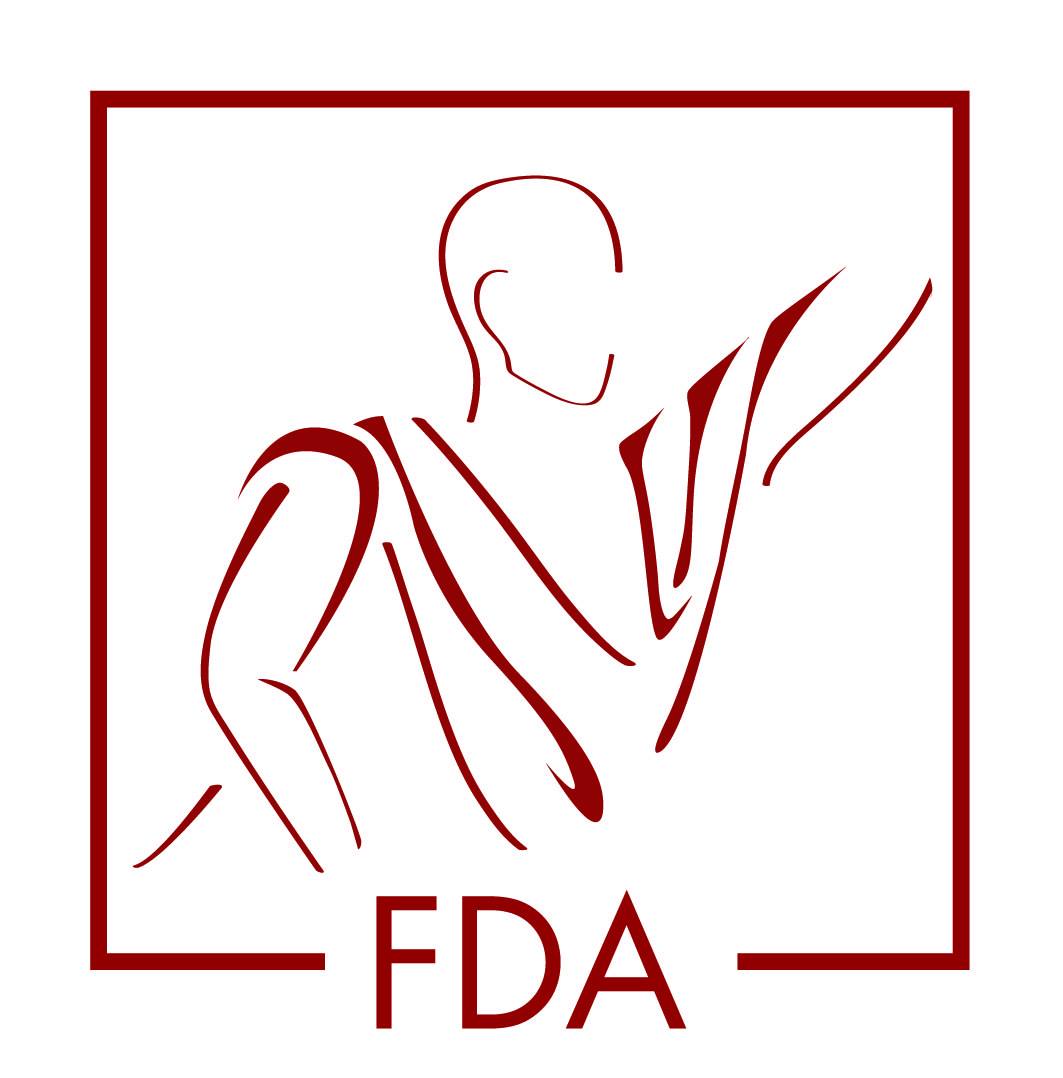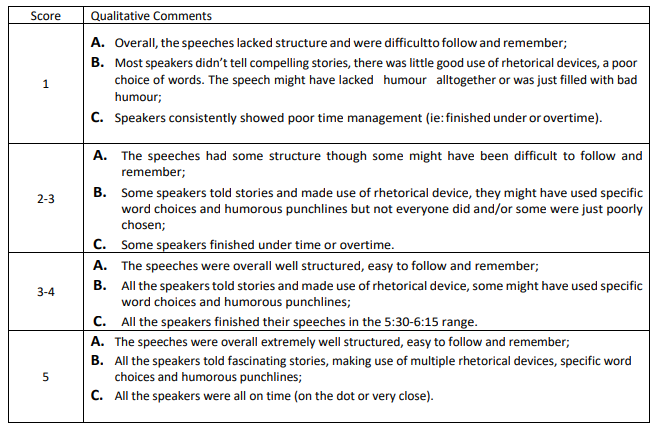FDA debates are judged on the basis of five equal criteria.
Each criterion is accompanied by a points bracket table - given to the judges - that reflects the score that should be given per criterion to a team on the basis of qualitative observations.
See the Debating Rules for more details on judging.
ARGUMENTS
Assessing the nature, quantity, validity, relevance, logical soundness, diversity, originality and clarity of the presented evidence in support of a given thesis.
Sub-criteria:
Burden of proof / made the best case
Clarity and relevance of arguments
Diversity and originality of arguments
FORM
Assessing the form of a speech by looking at its structure, timing, use of rhetorical devices, good wording, signposting and storytelling.
Sub-criteria:
Structure
Style
Timing
TEAMWORK
Assessing the ability of speakers to work as a team through team spirit, consistency, fulfilment of roles, creative harmony and progression.
Regarding roles in a debate:
First speaker (the Prime Minister or Shadow PM): the PM should define the terms and the frame of the motion, describe their teamline, and introduce their team members whilst giving a foretaste of their arguments;
Second, Third, and Fourth speakers: the speakers must present their individual arguments and link them to the overall teamline;
Fifth speaker (the Whip): the Whip gives a summary speech, in which they underline the points of clash between the two teams, whilst briefly summing up both sides’ arguments, and demonstrating why their team was victorious. The Whip does not present new arguments.
Sub-criteria:
Respect of roles (as described above)
Team Spirit
Consistency
ENGAGEMENT
Assessing the speakers’ capacity to interact and challenge the other team through rebuttals , Points of Information (PoIs) and an adapted line of argumentation.
Sub-criteria:
Rebuttals
PoIs
Adaptation
STAR QUALITY
This criterion has a special place in the FDA’s history. It is often described as the "je ne sais quoi" that transforms a speaker into an orator. It is the most subjective criterion, to be awarded to those whose spark and aura made you fall in love with their speeches.
This criterion aims to assess what is commonly known as “charisma” through the sub-criteria of paraverbal and nonverbal communication as well as the “charm” of a speaker.
Sub-criteria:
Paraverbal
Nonverbal
Charm






